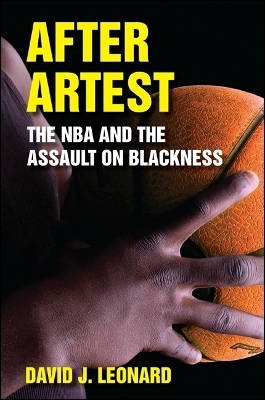
After Artest
The NBA and the Assault on Blackness
Seiten
2012
State University of New York Press (Verlag)
978-1-4384-4205-1 (ISBN)
State University of New York Press (Verlag)
978-1-4384-4205-1 (ISBN)
Explores how the NBA moved to govern black players and the expression of blackness after the “Palace Brawl” of 2004.
On November 19, 2004, a fight between NBA players Ron Artest and Ben Wallace escalated into a melee involving several other players and many fans. The "Palace Brawl," writes David J. Leonard, was a seminal event, one that dramatically altered outside perceptions of the sport. With commentators decrying the hip hop or gangsta culture of players, the blackness of the NBA was both highlighted and disdained. This was a harsh blow to the league's narrative of colorblindness long cultivated by Commissioner David Stern and powerfully embodied in the beloved figure of Michael Jordan. As Leonard demonstrates, the league viewed this moment as a threat needing intervention, quickly adopting policies to govern black players and prevent them from embracing styles and personas associated with blackness. This fascinating book discloses connections between the NBA's discourse and the broader discourse of antiblack racism. Particular policy changes that seemed aimed at black players, such as the NBA dress code and the debate over a minimum age requirement, are explored.
On November 19, 2004, a fight between NBA players Ron Artest and Ben Wallace escalated into a melee involving several other players and many fans. The "Palace Brawl," writes David J. Leonard, was a seminal event, one that dramatically altered outside perceptions of the sport. With commentators decrying the hip hop or gangsta culture of players, the blackness of the NBA was both highlighted and disdained. This was a harsh blow to the league's narrative of colorblindness long cultivated by Commissioner David Stern and powerfully embodied in the beloved figure of Michael Jordan. As Leonard demonstrates, the league viewed this moment as a threat needing intervention, quickly adopting policies to govern black players and prevent them from embracing styles and personas associated with blackness. This fascinating book discloses connections between the NBA's discourse and the broader discourse of antiblack racism. Particular policy changes that seemed aimed at black players, such as the NBA dress code and the debate over a minimum age requirement, are explored.
David J. Leonard is Associate Professor of Critical Culture, Gender, and Race Studies at Washington State University and the author of Screens Fade to Black: Contemporary African American Cinema. He is also the coeditor (with C. Richard King) of Commodified and Criminalized: New Racism and African Americans in Contemporary Sports and of Visual Economies of/in Motion: Sport and Film.
| Erscheint lt. Verlag | 1.5.2012 |
|---|---|
| Reihe/Serie | SUNY series on Sport, Culture, and Social Relations |
| Zusatzinfo | Total Illustrations: 0 |
| Verlagsort | Albany, NY |
| Sprache | englisch |
| Maße | 152 x 229 mm |
| Gewicht | 508 g |
| Themenwelt | Sport ► Ballsport ► Basketball |
| Recht / Steuern ► Strafrecht ► Kriminologie | |
| ISBN-10 | 1-4384-4205-X / 143844205X |
| ISBN-13 | 978-1-4384-4205-1 / 9781438442051 |
| Zustand | Neuware |
| Haben Sie eine Frage zum Produkt? |
Mehr entdecken
aus dem Bereich
aus dem Bereich
die 365 besten Übungen
Buch | Softcover (2024)
Copress (Verlag)
CHF 39,90
Technik, Taktik, Training, Methodik
Buch | Softcover (2024)
Meyer & Meyer (Verlag)
CHF 45,90


